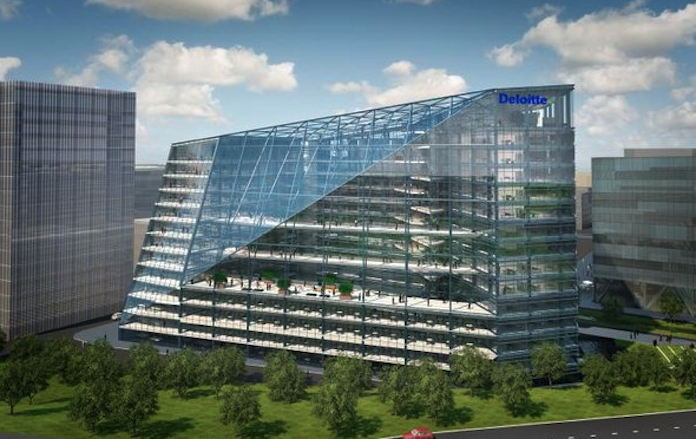The Edge in Amsterdam

The Edge in Amsterdam has received high praise as one of the most intelligent buildings in the world, earning recognition from Bloomberg and RCR Wireless News. This impressive structure is equipped with approximately 28,000 sensors, allowing for a highly responsive and interactive user experience. Employees can leverage their smartphones to interact with the building, enabling them to locate coworkers, adjust the temperature, and schedule workouts in the gym. The Edge offers a truly innovative workplace environment that merges cutting-edge technology with comfortable and convenient amenities.
Tottenham Hotspur Stadium in London
The stadium has over 1,600 Wi-Fi access points, he provides free wireless access to the 62,062 fans the stadium can accommodate, even when it’s full. 700 Bluetooth beacons work with a smartphone app to direct fans to restaurants, shops, bars, and other locations within the stadium.
Allianz Arena in Munich
The arena’s appearance called a dinghy in German, can change colors like a chameleon. For example, it turns green on St. Patrick’s Day. The facility uses an array of sensors to track the condition of the grass on the field and make recommendations.
Robotic Services at Sheraton Los Angeles, San Gabriel
Sheraton Los Angeles, San Gabriel may seem like a typical 288-room hotel from the outside, but according to the L.A. Times, it offers a range of robotic services that are specifically designed to attract Chinese tourists. These amenities include a robot that serves as a guide through the lobby, complete with sensors to ensure a seamless guest experience. This innovative use of robotics is just one example of how hotels are leveraging technology to enhance the guest experience. By offering these cutting-edge services, Sheraton Los Angeles, San Gabriel is able to stand out from the competition and cater to the needs of its target audience.
Salesforce Tower in San Francisco
Aiming for LEED Platinum status, the building also uses its intelligent HVAC system and water recycling. The building utilizes umbrellas and glass façades to keep heat away from the sun.
The Crystal in London
Priced at £30m, Crystal comes with a sophisticated building management system that tracks electricity used per kilowatt. The building is equipped with a Siemens lighting control system that controls all lamps in the building to optimize power consumption.
Apple Park, Cupertino, California
His $5 billion circular building at Apple Park may not have been widely acclaimed by architects, but it is one of his most energy-efficient buildings internationally. The solar panels on the roof of the building are all powered by renewable energy and generate 17 megawatts of energy. This is one of the largest totals among solar roofs.
Leadenhall Building in London
London’s tallest building, the Leadenhall Building, made extensive use of IoT technology during its construction. RFID-based data tags have helped builders track the location of components and equipment. A total of 83% of the construction was done offsite, streamlining construction.
Samsung Austin Semiconductor
Over the past two decades, Samsung has invested $17 billion in the Austin facility. Recently, Samsung Austin Semiconductor became the home of his 5G innovation zone. The facility is also testing the use of 5G in conjunction with live 4K video and IoT detection to drive advances in factory automation.
Schneider Electric Smart Factory in Lexington, Kentucky
The facility uses a variety of technologies, from Schneider’s EcoStruxure platform to augmented reality. The company boasts that Ecostruxure Augmented Operator Advisor has reduced the time spent repairing critical equipment by 20%.